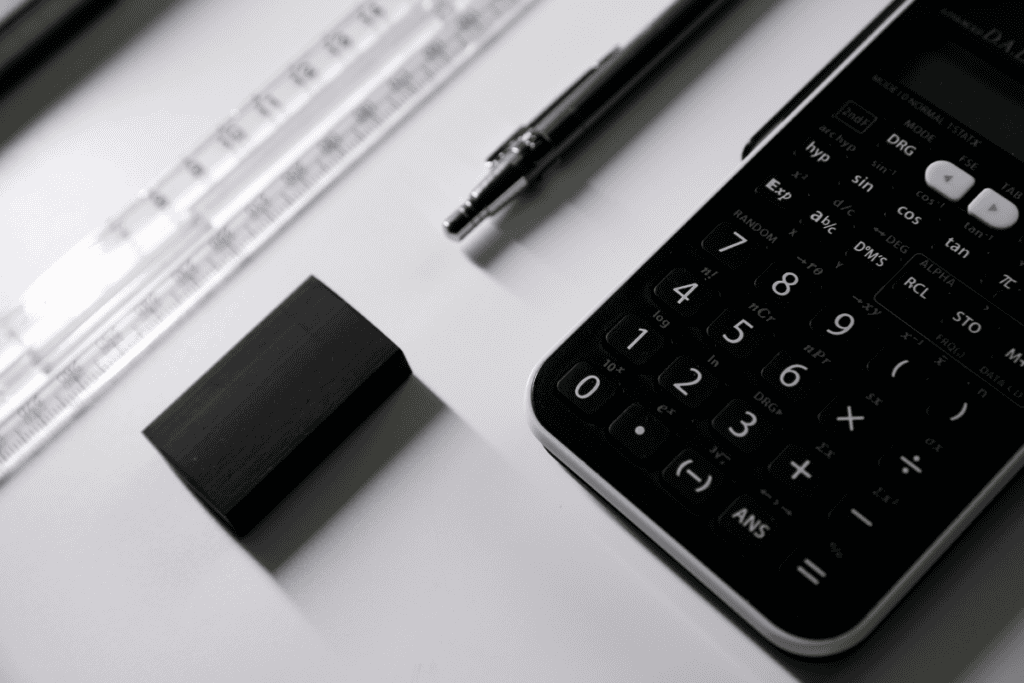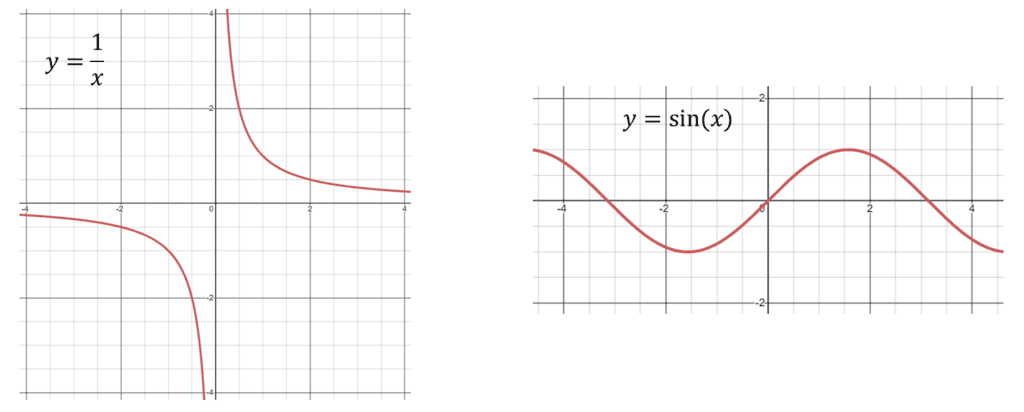VCE Maths Methods is a prerequisite for many university courses, but what exactly do you learn in the sub? Knowing what’s covered in the study design for Maths Methods will help you decide if this is the right subject for you, but also assist with preparation as you go through your VCE journey.
Let’s dive into VCE Maths Methods, and check out what’s going on!
What is VCE Maths Methods all about?
VCE Maths Methods Study Design: Units 1 and 2
VCE Maths Methods Study Design: Units 3 and 4
What is VCE Maths Methods all about?
VCE Maths Methods will see you building on knowledge from previous years. You’ll continually develop skills as you progress through the VCE journey, and in the end you’ll be able to manipulate complicated algebraic expressions, understand principles of statistics, and use mathematics to solve real-life dilemmas!
One common challenge in VCE Maths Methods is that everything builds on everything else. For example, the algebra you learn will help with drawing graphs, these graphs can be fleshed out with calculus and fully understanding probability requires sound knowledge of calculus.
The connections are endless — so it’s best to think of VCE Maths Methods as a holistic subject, rather than self-contained topics!
Want to find out which VCE Maths subject will give you the best ATAR? Check out our guide here!
VCE Maths Methods Study Design: Units 1 and 2
Units 1 and 2 are blocked into four different topics:
Remember that you will often have to apply skills that span different topics!
#1: Functions and graphs
What is a function? How do I write and interpret a function? How does this all link back to graphs?
These are the types of questions that you’ll know the answer to as you study functions and graphs in VCE Maths Methods.
You will learn what a function is, as well as appropriate functional notation. You will learn about a series of functions and relations, including:
Check out our 25 practice exam questions for Maths Methods here!
You will learn what these graphs look like (though you might already have a clue what a circle looks like!), as well as how you can transform these graphs. Furthermore, you will be able to apply these functions to model real situations, such as growth of bacteria, or temperature change over a day!
Above: Two examples of graphs you will learn about.
#2: Algebra
Algebra, functions and graphs all go hand in hand. When you study algebra, you will study how to change mathematical expressions and solve equations. You will learn many techniques that allow you to achieve these, such as:
- factorisation and expansion
- the remainder, factor and rational root theorems
- navigating square roots and other tricky expressions
- how to solve exponential and trigonometric equations
- using index and logarithm laws
Questions might test you just on your algebra knowledge, but they could also ask for how to interpret an answer graphically. This is an example of the type of integration between topics you’ll need to understand!
#3: Calculus
Calculus… the dreaded topic that sends shivers up people’s spines. Worry not though – if you’ve understood the intricacies of graphs and functions, feel comfortable with your algebraic skills, and have a desire to learn, calculus is a piece of cake!
In Units 1 and 2, you will discover that calculus is really just a fancy word for rate of change. Key skills you will learn will include:
- the distinction between average and instantaneous rate of change
- how to find equations of tangents
- how to find and interpret a derivative of a polynomial
- calculate the antiderivative of a polynomial
- Using antiderivatives to set up definite integrals
You will learn these basic skills, and also apply them in the context of an object’s motion. You will also learn how to use calculus to supplement your knowledge of graphs and algebra!
Above: You’ll be able to solve expressions like the one above when you learn calculus!
#4: Probability and statistics
While probability seems like the odd one out, the skills you learn in Units 1 and 2 will set you up for success in Units 3 and 4. Among the techniques you learn are:
- how to visually represent probabilistic events
- when and how to use addition and independence rules
- identifying and managing conditional probability
- using addition and multiplication principles to count possibilities
- how to distinguish between combinations and permutations
Above: There are many ways to represent probability events.
VCE Maths Methods Study Design: Units 3 and 4
Units 3 and 4 will build on the key skills from Units 1 and 2. If your Units 1 and 2 knowledge is a bit rusty, be sure to shake off that rust before you get started with Units 3 and 4!
Once again, Units 3 and 4 can be broken down into 4 distinct, but related topics.
#1: Functions and graphs
In Units 1 and 2, you learned about various functions, their transformations and applications. These same principles will be required in Units 3 and 4. However, you will also need to consider combinations of functions. More specifically:
- addition and subtraction functions,
- composite functions
- hybrid (piecewise) functions
You will need to think about the properties of these combination functions, and think back to how they relate to other functions.
Above: This is quite a strange function! While you won’t cover this function specifically, you will understand how to create graphs like this!
#2: Algebra
Fortunately, the algebra component does not get much harder in Units 3 and 4. All of the skills you learn in Units 1 and 2 are applicable to everything else you learn in Units 3 and 4.
Ace your VCE Maths Methods Unit 1 and 2 Practice SACs and read about our comprehensive guide here!
#3: Calculus
Calculus in Units 3 and 4 is quite a step up from Units 1 and 2. Since you learned about product and composite functions, you will also need to learn how to perform differentiation on these functions! That’s not all though – some of the other skills you learn will include:
- differentiation of logarithmic, trigonometric and exponential functions
- how and when to use the chain, product and quotient rules
- antidifferentiation of logarithmic, trigonometric, exponential and special polynomials
- setting up, evaluating and interpreting definite integrals for any of the above functions
Notice how these are all functions you need to be familiar with. You can then use this information to help you draw and interpret graphs.
#4: Probability and statistics
This topic is also greatly expanded upon going into Units 3 and 4. Some key areas that you will focus on include:
- how to identify and describe discrete random variables
- interpretation of the binomial distribution, and using this distribution to help calculate probability of discrete events
- continuous random variables, including the use of functions to describe probability density functions
- the normal distribution, and using this distribution to calculate probabilities
- the distinction between a population parameter and a sample statistic
- how to calculate and interpret confidence intervals
While some of the probability topic is self-contained, you can see that there is also involvement of functions. This means you might be expected to graph a continuous probability distribution, or use a definite integral to find certain values for example.
Check out our 7-step night routine before your Maths Methods exam here!
Putting Everything Together
VCE Maths Methods isn’t just about knowing the course — you have to understand everything from the basics to the nitty-gritty applications.
Very rarely will you be asked to “perform this specific technique”. Rather, you’d be presented a problem, and will need to decide what is the most appropriate method to use!
Looking for VCE Maths Methods past papers? Check out our master list here!
And, That’s All You Need to Know from the Maths Methods study design!
VCE Maths Methods can be challenging, but it can equally be hugely rewarding. Success will set you up for any mathematics you work on in the future. The only question is — do you think you’re up for the challenge?
Have a week until your Maths Methods exam? Check out our 7 day study plan here!
Are you looking for some extra help with understanding content from the VCE Maths Methods study design?
We have an incredible team of VCE tutors and mentors!
We can help you master the VCE Maths Methods study design and ace your upcoming VCE assessments with personalised lessons conducted one-on-one in your home or online!
We have expert Math tutors within Melbourne helping students SMASH Maths Methods! Get booked in today to secure your math mentor!
We’ve supported over 8,000 students over the last 11 years, and on average our students score mark improvements of over 20%!
To find out more and get started with an inspirational VCE tutor and mentor, get in touch today or give us a ring on 1300 267 888!
Kevin Chen recently completed his Bachelor of Biomedicine at the University of Melbourne. He is now undertaking an Honours year, where he is investigating the rise of hospital superbugs. Kevin lives by the motto “smiles go for miles!”









